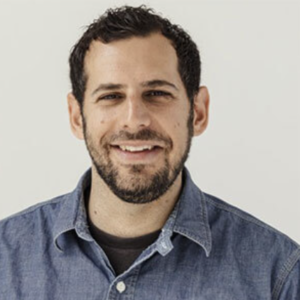“To stop your mind does not mean to stop the activities of mind. It means your mind pervades your whole body.” – Shunryu Suzuki
Meditation happens in the body. I think we can all mostly agree on that. Yet why when so many of us sit down to meditate we so easily forget this and end up endlessly cycling in and trying to catch and subdue an out of control thinking mind?
Being in the body is hard. For many of us the body, more specifically the feeling body, can be a painful and confusing place. It’s no wonder that we develop strong habits of numbing, avoiding, and endlessly fixing our felt experiences that arise within it.
Just as our corporeal body suffers when we don’t take proper care of it, so too does our feeling body of sensations and emotions. Like an attic that accumulates dust and cobwebs when ignored, our body of feelings, emotions, and life force energies can “clutter,” resulting in a not so stellar emotional life. This further compounds when we have unresolved trauma or emotional injury.
Because meditation involves deepening and accessing awareness, a quality of mind that can know and witness our experience more directly, eventually (whether we like it or not) we will begin to notice aspects of our feeling world that have been more or less dormant.
In traditional Buddhist meditation this is one of the reasons why cultivating a relationship with a mentor is highly recommended. I have seen first hand the damage that can happen when beginner meditators attempt to shortcut the system, going on intensive meditation retreats without strong guidance or preparation.
Traditionally, awareness is something we cultivate in steps. The practice starts in the body as we work with bringing awareness to our physical form and breath. When we build our practice slowly over time it allows the body to safely catch up.
Though the body is mentioned as the starting place for meditation in the foundational teachings of the Buddha, I have seen many modern meditators struggle with how to approach a more embodied practice. We so want to get out of our heads, but no matter how hard we try, we just don’t know how!
When working with one-to-one clients, this is probably one of the biggest complaints I hear. It comes up so often that I have developed some of my own protocols for helping to unpack this.
It is of course a natural response to turn away from what is unpleasant in our experience, and meditation is no exception. But for those who have put in a decent amount of time on the meditation cushion, eventually the body catches up.
When this happens some quit or find endless excuses not to practice. For others we can get stuck in a static top-down approach of constant conceptual framing. Either of these approaches basically boils down to some kind of an anxious/avoidance response and takes us further away from the body.
Fortunately there is another choice. Interoception is our ability to know/feel our internal experience within the body. It is both a quality that comes naturally to us when the body is healthy, and a quality that we can develop through meditative awareness.
But just as muscles in the body can atrophy when left unused. Our interoceptive awareness can also weaken. Fortunately, like other skills, this is something we can re-learn and practice.
The following is a short meditation you can work with to reconnect to your body. I recommend putting aside 5-10 minutes to do the practice:
- Find a quiet place and a comfortable seat to take a relaxed yet alert posture.
- Gently close your eyes or leave them open. Whatever feels the most comfortable.
- Begin by bringing your awareness directly into the body. This can be as simple as sensing the contact with the seat or floor below you.
- Continue by taking a few breaths, deepening your awareness as you begin to sense the body as a whole.
- If you need to spend more time just feeling the floor and earth below you that’s also fine.
- As the body opens, continue to invite your awareness to extend to more and more of your felt experience.
- As you continue to feel the sensations and energies in the body you can gently prompt further exploration by asking “What else?”
- Continue to “listen” deeply to the body without pushing. Just naturally watch and feel the sensations as they arise.
- When you’re ready you can close the practice by connecting back to a specific felt presence like the seat or floor below you.
Embodied awareness will naturally grow more with the time and attention you give it. Each time you sit down to practice in this way just let yourself open to the body and let it guide you.
As our interoceptive awareness develops in meditation we become skilled at meeting ever subtler sensations within the body. As this deepens we notice their changing and transparent nature. At the same time we are able to approach them with a more inquisitive and evolving compassionate heart.
 |
Scott Tusa is a Buddhist meditation teacher and practitioner with over two decades of experience in the exploration and embodiment of the Buddhist path. Ordained as a Buddhist monk by His Holiness the 14th Dalai Lama at twenty-eight, Scott spent nine years deepening his understanding of the Dharma through solitary meditation retreats and in-depth study. Since 2008, he has been sharing his knowledge and guidance, teaching meditation to individuals and groups worldwide, both in person and online. His teachings empower meditators to cultivate confidence, inner wisdom, and joy in their practice. Join Scott online for a 4-week drop-in series starting Monday Oct 9th, 2023: Touching The Ground Of The Body With Kindness |
